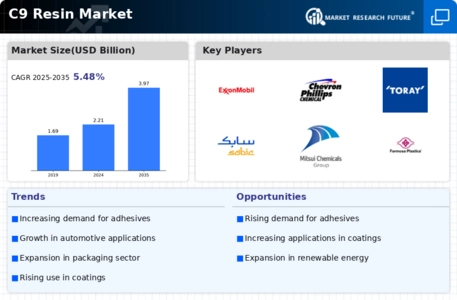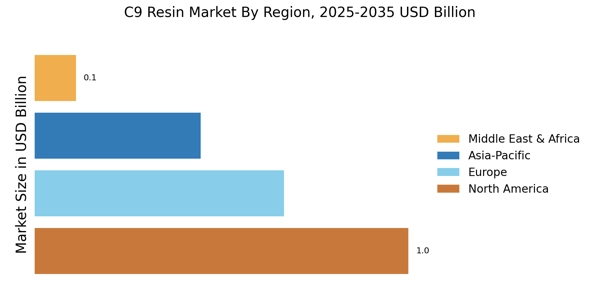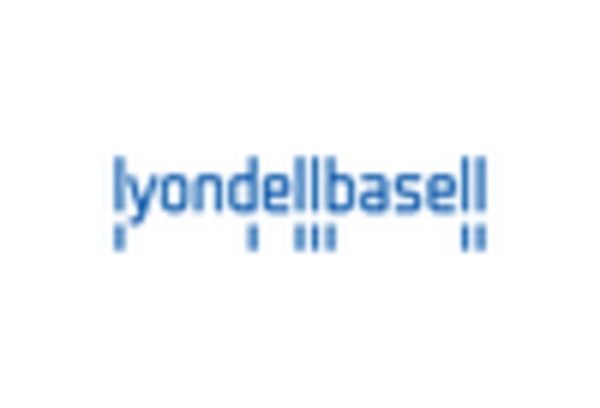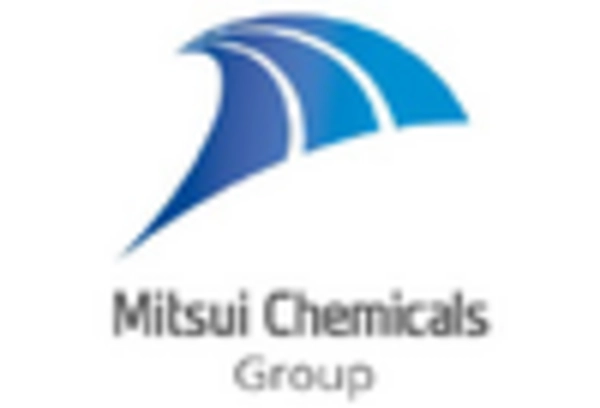Growth in the Packaging Sector
The C9 Resin Market is benefiting from the robust growth in the packaging sector, which is increasingly adopting advanced materials for improved performance. The demand for flexible packaging solutions, driven by consumer preferences for convenience and sustainability, is propelling the use of C9 resins. These resins are integral in formulating adhesives and coatings that enhance the functionality and aesthetic appeal of packaging materials. Recent statistics indicate that the packaging industry is projected to grow at a rate of around 5.5% annually, creating a favorable environment for C9 resin applications. As companies strive to innovate and meet consumer demands, the C9 Resin Market is likely to see a corresponding increase in demand, reinforcing its position in the packaging landscape.
Expansion in Coatings and Paints
The C9 Resin Market is poised for growth due to the expanding applications in coatings and paints. The increasing demand for high-quality, durable coatings in various sectors, including automotive and industrial applications, is a significant driver. C9 resins are favored for their ability to enhance the performance characteristics of coatings, such as adhesion, gloss, and resistance to environmental factors. Market data indicates that the coatings segment is expected to witness a compound annual growth rate of approximately 4.5% over the next few years. This trend suggests that manufacturers are increasingly incorporating C9 resins into their formulations to meet the evolving needs of consumers for superior coating solutions, thereby bolstering the C9 Resin Market.
Rising Demand in Adhesives and Sealants
The C9 Resin Market is experiencing a notable surge in demand, particularly in the adhesives and sealants sector. This growth is primarily driven by the increasing application of adhesives in construction, automotive, and packaging industries. According to recent data, the adhesives segment is projected to account for a significant share of the C9 resin consumption, with an estimated growth rate of around 5% annually. The versatility of C9 resins in formulating high-performance adhesives enhances their appeal, as they offer excellent bonding properties and thermal stability. As industries continue to prioritize efficient and durable bonding solutions, the C9 Resin Market is likely to benefit from this trend, positioning itself as a key player in the adhesives landscape.
Technological Innovations in Production
The C9 Resin Market is witnessing advancements in production technologies that enhance efficiency and product quality. Innovations such as improved polymerization processes and the development of bio-based C9 resins are gaining traction. These technological advancements not only optimize production costs but also align with the growing emphasis on sustainability in manufacturing. As industries increasingly seek eco-friendly alternatives, the introduction of bio-based C9 resins could potentially reshape market dynamics. The ability to produce high-performance resins with reduced environmental impact may attract new customers and applications, thereby expanding the C9 Resin Market. This trend indicates a shift towards more sustainable practices, which could redefine competitive advantages in the market.
Increasing Regulatory Support for Sustainable Materials
The C9 Resin Market is likely to benefit from increasing regulatory support aimed at promoting sustainable materials. Governments and regulatory bodies are implementing policies that encourage the use of eco-friendly resins in various applications, including adhesives, coatings, and packaging. This regulatory landscape is fostering innovation and investment in sustainable C9 resin production methods. Market analysis suggests that companies that adapt to these regulations by developing greener products may gain a competitive edge. As sustainability becomes a focal point for consumers and industries alike, the C9 Resin Market is expected to experience growth driven by the demand for compliant and environmentally friendly solutions.


















Leave a Comment